
Valley of Genius: The Uncensored History of Silicon Valley (As Told by the Hackers, Founders, and Freaks Who Made It Boom)
by
Adam Fisher
Published 9 Jul 2018
Andy Hertzfeld: So I got a phone call from Stewart Brand, and once a week for seven weeks we drove up to Sausalito. There were like seven hackers he got to design the Hackers Conference. Stewart Brand: We got a pretty good influx of folks. There was Ted Nelson, obviously. Lee Felsenstein, the sort-of master of ceremonies for the Homebrew meetings, which I had never gone to. But his reputation was good. Lee Felsenstein: By that time, Homebrew had ossified. It wasn’t new people coming anymore. There was the same old faces. I called it “the old farts society.” We had the meetings for the Hackers Conference at the tugboat that Stewart Brand lived on in Sausalito. The meetings were mostly where we threw out names of who else ought to be invited.
…
Everyone wanted to get in on it there. Doug Carlson (at the Hackers Conference): The dissemination of information as a free object is a worthy goal. It’s the way most of us learned in the first place. But the truth of the matter is, what people are doing has more and more commercial value, and if there’s any way for people to make money off it, somebody’s going to try to get an angle on it. So I think that it ought to be up to the people who design the product whether or not they want to give it away or sell it. It’s their product and it should be a personal decision. Robert Woodhead (at the Hackers Conference): Tools I will give away to anybody.
…
I don’t want anyone hacking into that product and changing it—because then it won’t be mine. Steve Wozniak (at the Hackers Conference): Hackers frequently want to look at code, like operating systems, listings, and the like, to learn how it was done before them. Source should be made available reasonably to those sort of people. Not to copy, not to sell, but to learn from. Stewart Brand: Wozniak made the point that there’s a whole bunch of work creating a piece of software that does something useful and actually works well. Steve Wozniak (at the Hackers Conference): Information should be free—but your time should not. Stewart Brand: So, putting these things out for free is kind of nuts.

Coding Freedom: The Ethics and Aesthetics of Hacking
by
E. Gabriella Coleman
Published 25 Nov 2012
There is one event, however, which is generally experienced as startlingly unique and special—the hacker conference, which I cover in detail at the end of the chapter. The conference is culturally significant because it allows hackers to collectively enact, make visible, and subsequently celebrate many elements of their quotidian technological lifeworld. Whether it is by laying down cable, setting up a server, giving talks about technology, or hacking up some new source code, these actions at the hacker conference unfold in an emotionally charged setting. What the conference foremost allows for is a “condition of heightened intersubjectivity” (Collins 2004, 35) where copious instances of hacking are brought into being and social bonds between participants are made manifest, and thus felt acutely.
…
Compiled from over seventy life histories, I demonstrate how hackers interact and collaborate through virtual technologies, how they formulate liberal discourses through virtual interactions, how they came to learn about free software, and how they individually and collectively experience the pleasures of hacking. I also offer an extended discussion of the hacker conference, which I argue is the ritual (and pleasurable) underside of discursive publics. Chapter 2 (“A Tale of Two Legal Regimes”) presents what were initially two semi-independent legal regimes that over the last decade have become intertwined. The first story pertains to free software’s maturity into a global movement, and the second turns to the globalization and so-called harmonization of intellectual property provisions administered through global institutional bodies like the World Trade Organization.
…
Choices have to be made about what to include, what to exclude, and most important, how to include them. For the life history chapter, I have chosen stories, elements, and events that I hope faithfully capture the zeitgeist of becoming a free software hacker, ending with one of the most memorable hacker events: the hacker conference. The subsequent chapter, by examining the dual character of our age, whereby we are subject to an omnipresent legal system and also have at our disposal a vibrant set of legal alternatives, is meant to inspire a paradoxical degree of hope and despair, thereby contributing, in its reading, to the making of history.

From Counterculture to Cyberculture: Stewart Brand, the Whole Earth Network, and the Rise of Digital Utopianism
by
Fred Turner
Published 31 Aug 2006
By and large, they agreed that although the free dissemination of information was a worthy ideal, in some cases it was clearly only an ideal. If they could not agree on proper hacker business practice, they could agree that being a hacker—in this case, being the sort of person who was invited to the Hackers’ Conference—was valuable in its own right. Lee Felsenstein explained, “That little bit of cultural identity [was] extremely important.” In the popular press, hackers had been characterized as machine-obsessed, antisocial, and potentially criminal loners. Gathered in the stucco halls of Fort Cronkhite, hackers could recognize themselves as something else.
…
No apologies: we’re hackers. We define what a hacker is . . . nobody else.”66 In the end, the group did not come to any consensus on the right approach to take toward the emerging challenges of the software industry. But they had begun to reformulate their own identities, partially in terms of Whole Earth ideals. In the Hackers’ Conference, Brand and company provided computer workers with a venue in which to develop and live a group identity around the idea of hacking and to make sense of emerging economic forms in terms of that identity. This work had the effect of rehabilitating hackers in the public eye, but it also explicitly and securely linked Whole Earth people and the Whole Earth ethos to the world of computing.
…
That is, they linked the particular issues facing hackers to the broad themes of countercultural work generally and of the Whole Earth group in particular. They did not “report” a consensus generated by the invited hackers themselves so much as they melded the voices heard within the events’ various forums with the principles along which those forums were organized and with the experience of unity within the forums. At the Hackers’ Conference, Brand and his colleagues translated the individual experiences of three generations of hackers into a shared experience, an experience organized by Whole Earth people according to Whole Earth norms in the Catalog’s hometown.71 In the post-event reporting, the concerns of conference-goers and the culture of the conference itself—the Whole Earth culture—became one, and Stewart Brand, rather than any of the hackers, arose as this fused culture’s spokesman.
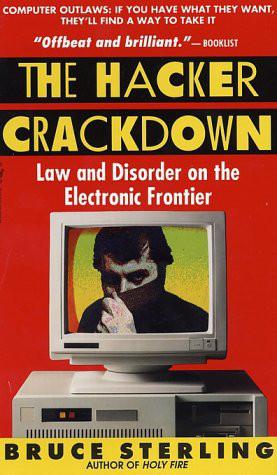
The Hacker Crackdown
by
Bruce Sterling
Published 15 Mar 1992
Barlow, chatting helpfully and demonstrating the wonders of his modem to the puzzled fed, was alarmed to find all "hackers" generally under FBI suspicion as an evil influence in the electronic community. The FBI, in pursuit of a hacker called "NuPrometheus," were tracing attendees of a suspect group called the Hackers Conference. The Hackers Conference, which had been started in 1984, was a yearly Californian meeting of digital pioneers and enthusiasts. The hackers of the Hackers Conference had little if anything to do with the hackers of the digital underground. On the contrary, the hackers of this conference were mostly well-to-do Californian high-tech CEOs, consultants, journalists and entrepreneurs.
…
(This group of hackers were the exact sort of "hackers" most likely to react with militant fury at any criminal degradation of the term "hacker.") Barlow, though he was not arrested or accused of a crime, and though his computer had certainly not gone out the door, was very troubled by this anomaly. He carried the word to the Well. Like the Hackers Conference, "the Well" was an emanation of the Point Foundation. Point Foundation, the inspiration of a wealthy Californian 60s radical named Stewart Brand, was to be a major launch-pad of the civil libertarian effort. Point Foundation's cultural efforts, like those of their fellow Bay Area Californians the Grateful Dead, were multifaceted and multitudinous.
…
The crackdown raid may have done little to dissuade Phiber Optik, but its galling affect on the Wellbeings was profound. As 1990 rolled on, the slings and arrows mounted: the Knight Lightning raid, the Steve Jackson raid, the nation-spanning Operation Sundevil. The rhetoric of law enforcement made it clear that there was, in fact, a concerted crackdown on hackers in progress. The hackers of the Hackers Conference, the Wellbeings, and their ilk, did not really mind the occasional public misapprehension of "hacking;" if anything, this membrane of differentiation from straight society made the "computer community" feel different, smarter, better. They had never before been confronted, however, by a concerted vilification campaign.
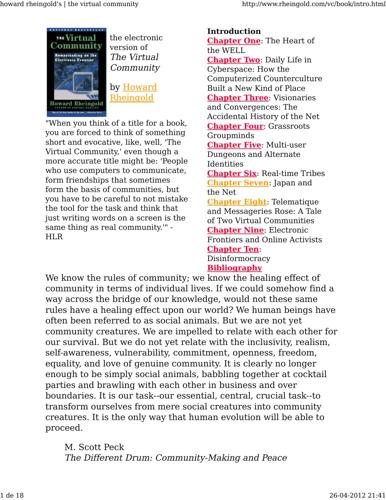
Howard Rheingold
by
The Virtual Community Homesteading on the Electronic Frontier-Perseus Books (1993)
Published 26 Apr 2012
Not only Agent Baxter, but his sources of information, seemed exceedingly unclear about the nature of whatever it was they were supposed to be investigating. It turned out that Barlow had been contacted by the FBI because his name was on the roster of an annual private gathering called the Hackers' Conference. Baxter reported that he had been informed that the Hackers' Conference was an 26-04-2012 21:46 howard rheingold's | the virtual community 15 de 36 http://www.rheingold.com/vc/book/9.html underground organization of computer outlaws that was probably part of the same grand conspiracy as the NuPrometheus League. Hacker used to mean something different from what it means now.
…
The Deadheads came online and seemed to know instinctively how to use the system to create a community around themselves, for which I think considerable thanks are due to Maddog, Marye, and Rosebody. Not long thereafter we saw the concept of the online superstar taken to new heights with the advent of the True Confessions conference. . . . Suddenly our future looked assured. . . ." Kevin Kelly had been editor of Whole Earth Review for several years when the WELL was founded. The Hackers' Conference had been his idea. Kelly recalled the original design goals that the WELL's founders had in mind when they opened for business in 1985. The design goals were: 26-04-2012 21:42 howard rheingold's | the virtual community 7 de 27 http://www.rheingold.com/vc/book/2.html 1) That it be free.
…
Just about everything Baxter told Barlow was wrong, and Barlow knew it. There was a wacky near-miss element to the way Baxter was wrong. It was true that Draper had once worked at Autodesk as a programmer, but that was as close to being the CEO of Autodesk that he ever got; the real CEO of Autodesk, John Walker, definitely was on the Hackers' Conference list of attendees himself. Autodesk makes computer-aided design software for personal computers and was in the process of developing a cyberspace toolkit for architects and designers, but it was hardly a top-secret defense contractor. John Draper did have some Russian programmer friends, but by 1990, the Evil Empire was in the throes of disintegration. 26-04-2012 21:46 howard rheingold's | the virtual community 16 de 36 http://www.rheingold.com/vc/book/9.html Baxter's story was hilariously misinformed enough to make anybody worry about how well the FBI is doing against the real techno-criminals, the nuclear terrorists and large-scale data thieves.
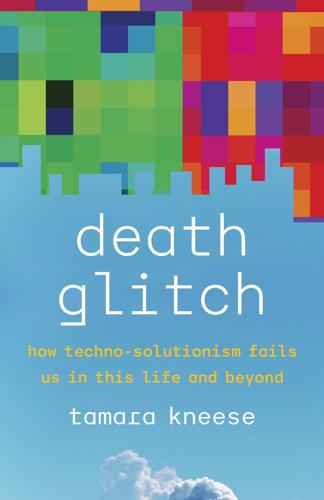
Death Glitch: How Techno-Solutionism Fails Us in This Life and Beyond
by
Tamara Kneese
Published 14 Aug 2023
Given the early internet’s relationship to homesteading and communalism, it is no accident that “seeds” and “pioneers” pepper the language used to describe the early web and its adherents. 25. Kuntz, “A Death Online Shows Cyberspace with a Heart and Soul.” 26. Hafner, The Well, 3. 27. Hafner, The Well, 44–45. 28. Coleman, “The Hacker Conference.” 29. Hafner, The Well, 79. 30. Hafner, The Well, 81. 31. Ullman, Close to the Machine; Wiener, Uncanny Valley. 32. Hafner, The Well, 130. 33. Hafner, The Well, 133. 34. Joanne McNeil writes about another WELL user, Carmen Hermosillo (username humdog), who published a manifesto in 1994 likening cyberspace to a vampire that inspired the commodification of the self.
…
Chun, Wendy Hui Kyong. Programmed Visions: Software and Memory. Cambridge: MIT Press, 2011. Cifor, Marika. “What Is Remembered Lives: Time and the Disruptive Animacy of Archiving AIDS on Instagram.” Convergence 27, no. 2 (2021): 371–94. doi.org/10.1177/1354856520979961. Coleman, Gabriella. “The Hacker Conference: A Ritual Condensation and Celebration of a Lifeworld.” Anthropological Quarterly 83, no. 1 (2010): 47–72. Conner, Katie. “10 Weirdest Things Your Alexa Can Say and Do.” CNET, September 20, 2020. www.cnet.com/how-to/the-weirdest-things-your-amazon-echo-can-say-and-do. Cottom, Tressie McMillan.

Whole Earth: The Many Lives of Stewart Brand
by
John Markoff
Published 22 Mar 2022
According to Levy, this ethic was a set of ideals premised on access to computers; free access to all information; distrust of authority; meritocracy; the belief that computers could create art and beauty; and the faith that computing could improve your life.[24] Kelly went to Brand and said, “You know, the funny thing about this is, as far as I can tell, none of these guys have ever met each other, these three generations of hackers. Let’s bring them together.” Brand loved the idea and he persuaded Kelly and Phelan to help organize an event to be called the Hackers Conference. They began assembling a group of elite computer programmers and hardware designers from around the Bay Area, crowding them into the Mirene for weekly evening meetings. High-profile computer designers such as Lee Felsenstein, who had designed the Osborne 1, and Andy Hertzfeld, one of the key designers of the Macintosh, trooped up to Sausalito to help with the organizing.
…
While Brand may simply have been intimidated by all of the Silicon Valley star power, there was also no disputing his attraction to people who were in the limelight, whether they were well-known intellectuals, CEOs, or governors. It was what Kesey had noticed when he had accused Brand of “cleaving” to power. When Brand had read the quote in a generally flattering Washington Post profile,[25] the words had stung. The Hackers Conference would become an annual event, drawing together a digital subculture that was passionate about the machines and programs they designed. The first gathering was marked by several heated debates that would continue long after everyone had gone home. While Apple cofounder Steve Wozniak argued that the term hacker represented the child in everyone, a well-known programmer named Brian Harvey warned there was a dark side as well, and the general public would soon come to see the word as synonymous with computer outlaws who broke into computers for sport and profit.
…
Immersion in the Brand clan, with their grudges and bad history, made him reckon intimately with how institutions that were more than a generation old could become “dysfunctionally convoluted, aggressively introspective and both oblivious and irrelevant to the rest of the world.” Some of that was particular to his own relationship with his family, but there was another concern as well. In November when he discussed the Clock Library during an impromptu session with Kevin Kelly at the Hackers Conference (still an annual event a decade after they’d founded it), the Long Clock idea proved to be a hard sell. Many of the hackers believed that an obsession with the past was lethally stultifying. “Everything that needs to be remembered is being collected and stashed easily accessible” was the consensus.
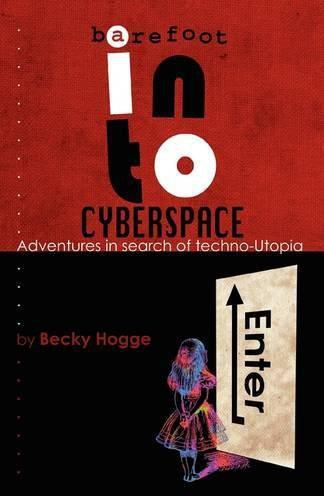
Barefoot Into Cyberspace: Adventures in Search of Techno-Utopia
by
Becky Hogge
,
Damien Morris
and
Christopher Scally
Published 26 Jul 2011
And in fact, it was ten years later that Steven Levy did the book Hackers, which sort of told the rest of the story.” Spurred on by Levy’s Hackers, in 1984, the same year of the inaugural Chaos Communication Congress in Germany, Brand convened the US’s first Hacker Con, in Marin County, California. “Organising the Hackers Conference was like some of the early hacking at MIT, so collaborative and rapid you couldnt keep track of who did what…” he wrote at the time, “But once they were on the scene, they were the worlds easiest group to work with. If anything went wrong 1) they didnt care, 2) they could fix it.” In the end, Brand attracted around 125 hackers to the upmarket camping resort, providing tools, a place to sleep and “enough candy and soda to get them through the night”.
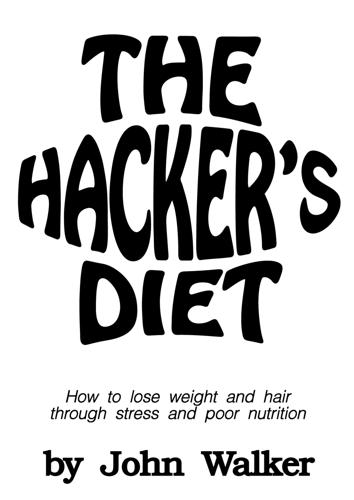
The Hacker's Diet
by
John Walker
Bob Bickford, computer and video guru, defined the true essence of the hacker as “Any person who derives joy from discovering ways to circumvent limitations.” Indeed…. Well, what better limitations to circumvent than ones you've endured all your life? For the last few years, I've spent a weekend every Fall attending the “Hackers Conference”: a gathering of computer folk who exult in seeing limitations transcended through creativity. A commemorative T shirt is designed for each conference, so when you fill out your application, you have to say what size you wear. Hackers being hackers, it's inevitable that somebody will enter these data into a computer and analyse them.
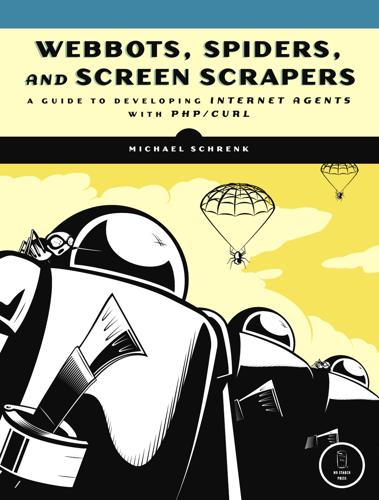
Webbots, Spiders, and Screen Scrapers
by
Michael Schrenk
Published 19 Aug 2009
If, however, you thirst for detailed information, or you see yourself as a future Hacker Jeopardy contestant,[64] you should read the SSL specification. The full details are available at http://wp .netscape.com/eng/ssl3/ssl-toc.html. * * * [64] Hacker Jeopardy is a contest where contestants answer detailed questions about various Internet protocols. This game is an annual event at the hacker conference DEFCON (http://www .defcon.org). Local Certificates Corporate networks sometimes use local certificates to authenticate both client and server. In the vast majority of cases, however, there is no need for a local certificate—in fact, I have never been in a situation that required one.
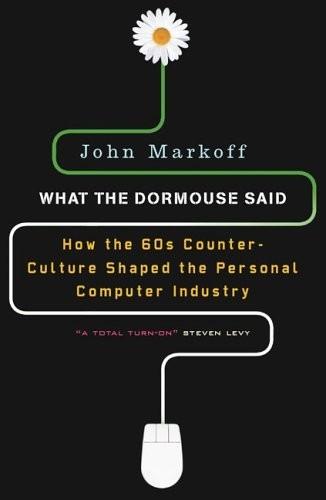
What the Dormouse Said: How the Sixties Counterculture Shaped the Personal Computer Industry
by
John Markoff
Published 1 Jan 2005
Mauldin, “Chatterbots, Tinymuds, and the Turing Test: Entering the Loeb-ner Prize Competition,” paper presented at AAAI-94, January 24, 1994. 18.Sean Colbath’s e-mail from Les Earnest, posted to alt.foklore.computers, February 20, 1990. 19.Les Earnest, e-mail to author, September 15, 2001. 20.Les Earnest, comments during a seminar at the Hackers Conference, Tenaya Lodge, Caif., November 11, 2001. 4 | Free U 1.Larry McMurtry, “On the Road,” The New York Review of Books, December 5, 2002. 2.Midpeninsula Free University catalog, spring 1969. 3.Ibid., fall 1969. 4.Author interview, Jim Warren, Woodside, Calif., July 16, 2001. 5.John McCarthy, “The Home Information Terminal—a 1970 View,” in Man and Computer, Proceedings of the First International Conference on Man and Computer, Bordeaux, 1970, ed.

Habeas Data: Privacy vs. The Rise of Surveillance Tech
by
Cyrus Farivar
Published 7 May 2018
Stingrays can also be reprogrammed to work for nearly any carrier in nearly any country. As stingrays become cheaper and smaller, they will undoubtedly be used not just by large organizations like the FBI, but also by small-town police forces, or worse, organized crime. In 2010, Kristin Paget (then known as Chris Paget) demonstrated to an audience at the hacker conference DEF CON how he built a rudimentary, but functional, stingray for about $1,500 in parts. In that talk, he controlled (“pwned”) around 30 audience members’ phones with his homebrew device. Like many other enforcement tools, the federal government has used grants to encourage local law enforcement to acquire this hardware in the name of fighting terrorism.
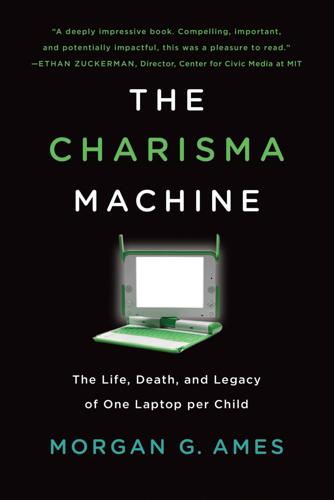
The Charisma Machine: The Life, Death, and Legacy of One Laptop Per Child
by
Morgan G. Ames
Published 19 Nov 2019
In Proceedings of the Third International Conference on Learning Analytics and Knowledge, edited by Dan Suthers, Katrien Verbert, Erik Duval, and Xavier Ochoa, 185–189. New York: ACM, 2013. https://doi.org/10.1145/2460296.2460332. Coleman, E. Gabriella. Coding Freedom: The Ethics and Aesthetics of Hacking. Princeton, NJ: Princeton University Press, 2013. ———. “The Hacker Conference: A Ritual Condensation and Celebration of a Lifeworld.” Anthropological Quarterly 83, no. 1 (Winter 2010): 47–72. https://doi.org/10.1353/anq.0.0112. Coleman, E. Gabriella, and Alex Golub. “Hacker Practice: Moral Genres and the Cutlural Articulation of Liberarlism.” Anthropological Theory 8, no. 3 (September 2008): 255–277. https://doi.org/10.1177/1463499608093814.
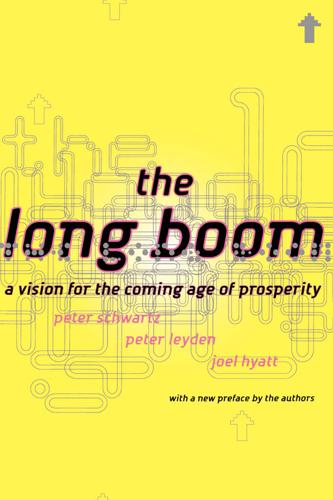
The Long Boom: A Vision for the Coming Age of Prosperity
by
Peter Schwartz
,
Peter Leyden
and
Joel Hyatt
Published 18 Oct 2000
Stevens, "In Kyoto, the Subject Is for Climate; the Forecast Is for Storms," New York Times (December 1, 1997), Dl. David Harris, "Sao Paulo Megacity," Rolling Stone (December 26, 1997), 126-134. to release the image: Stewart Brand is a cofounder of GBN and a longtime friend of Schwartz's. Brand went on to do many remarkable things, including founding the Hacker's Conference and the WELL, the pioneer on-line community, and writing many books, including The Media Lab. (New York: Penguin Books, 1987). gone completely global: Peter Schwartz and Stewart Brand, Decades of Restructuring. (Emeryville, Global Business Network, 1989) p. 57, "Drowning in Oil," The Economist, vol. 350, no. 8109 (March 6, 1999), 19, 23-25.
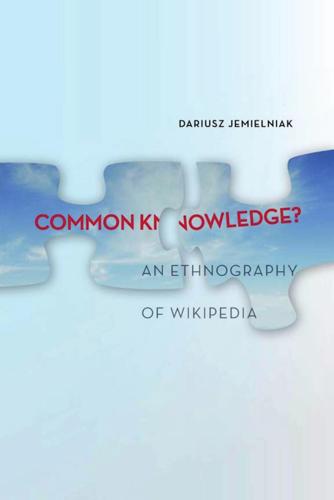
Common Knowledge?: An Ethnography of Wikipedia
by
Dariusz Jemielniak
Published 13 May 2014
Coleman, E. G. (2009). Code is speech: Legal tinkering, expertise, and protest among free and open source software developers. Cultural Anthropology, 24(3), 420–454. Coleman, E. G. (2010a). Ethnographic approaches to digital media. Annual Review of Anthropology, 39, 487–505. Coleman, E. G. (2010b). The hacker conference: A ritual condensation and celebration of a lifeworld. Anthropological Quarterly, 83(1), 47–72. Coleman, E. G. (2011). Hacker politics and publics. Public Culture, 23(3), 511–516. Coleman, E. G. (2013). Coding freedom. Princeton, NJ: Princeton University Press. Coleman, E. G., & Golub, A. (2008).
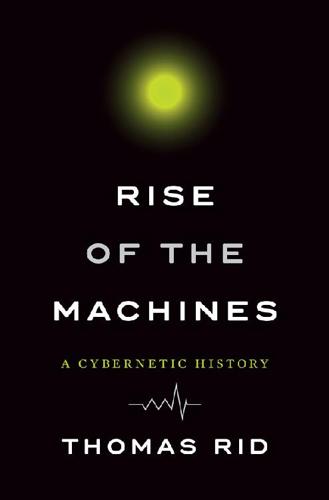
Rise of the Machines: A Cybernetic History
by
Thomas Rid
Published 27 Jun 2016
The “Crypto Anarchist Manifesto” already contained the seeds of what would become a potent political ideology: technology itself, not humans, would make violence obsolete. May distributed his pamphlet electronically and in print among like-minded activists at the Crypto ’88 conference in Santa Barbara and again at the Hackers Conference that year. But something was missing. The message didn’t quite get out. By early 1992, Timothy May and a friend, Eric Hughes, were becoming annoyed with the glacial progress of actual cryptographic technologies that could be used by normal people. Yes, Phil Zimmermann had just released his home-brewed PGP (for “Pretty Good Privacy”) 1.0 to the public.

Surveillance Valley: The Rise of the Military-Digital Complex
by
Yasha Levine
Published 6 Feb 2018
“No other group that I know of has set out to liberate a technology and succeeded.… High tech is now something that mass consumers do, rather than just have done to them, and that’s a hot item in the world.” He added, “The quietest of the ’60s sub- subcultures has emerged as the most innovative and most powerful—and most suspicious of power.”35 The Hackers’ Conference was a big moment in the cultural history of Silicon Valley. It helped introduce computer programmers to the public in a totally different way. These were no longer engineers working for big corporations and military contractors but “hackers”—geniuses and rebels bucking the system. Although Brand was an important figure driving this change of perception, he was not operating in isolation but represented a bigger cultural sea change.

Dawn of the Code War: America's Battle Against Russia, China, and the Rising Global Cyber Threat
by
John P. Carlin
and
Garrett M. Graff
Published 15 Oct 2018
As I went through law school, I followed the debates and declarations from John Perry Barlow and others about defending the unique sovereignty of the online space. Barlow, who raised cattle in Wyoming, recalls awakening to the challenges of cyberspace when an FBI agent, Richard Baxter, showed up at his ranch asking about the “New Prosthesis League,” which was actually a hacking group known as Nu Prometheus League. Barlow had attended the Hackers Conference with phone phreakers like Steve Wozniak, and the FBI figured someone who had attended that conference might be able to help them track down the group that was stealing code from Apple Computer. “I knew Agent Baxter from before. I’d had livestock stolen when I was still in the cattle business, and he’s a pretty good hand with livestock theft.
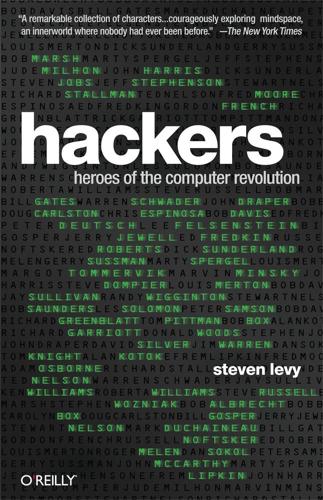
Hackers: Heroes of the Computer Revolution - 25th Anniversary Edition
by
Steven Levy
Published 18 May 2010
Those included in the text immediately found their names in the index and proceeded to vet passages for accuracy and technological correctness. Those not in the index sulked, and to this day whenever they encounter me, in person or in the ether of cyberspace, they complain. Ultimately, the experience was exhilarating. The Hacker Conference, which would become an annual event, turned out to be the kickoff for a spirited and public debate, continued to this day, about the future of hacking and the Hacker Ethic as defined in this book. The term “hacker” has always been bedeviled by discussion. When I was writing this book, the term was still fairly obscure.
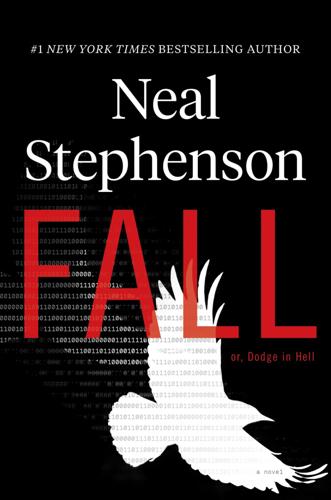
Fall; Or, Dodge in Hell
by
Neal Stephenson
Published 3 Jun 2019
His area of specialization is the ancient city of Ugarit, which to make a long story short was an interesting place from a religious standpoint, sitting in the Venn diagram intersection of what we think of as Semitic and what we think of as Greek ideas about god(s), and in an interesting transitional phase between poly- and monotheism. Some of the ideas mentioned in the Moab section of the book, under the heading of the Ethical Network Sabotage Undertaking, have been floating around for decades; Matt Blaze first mentioned them in my hearing under the name of the Encyclopedia Disinformatica, during the mid-1990s, at the Hackers Conference. The term “Meatspace,” frequently used in this novel, appears to have been coined by Doug Barnes in 1993. Finally, there have been various big-picture conversations over the years with George Dyson and Jaron Lanier that undoubtedly influenced this book. About the Author NEAL STEPHENSON is the bestselling author of the novels The Rise and Fall of D.O.D.O.